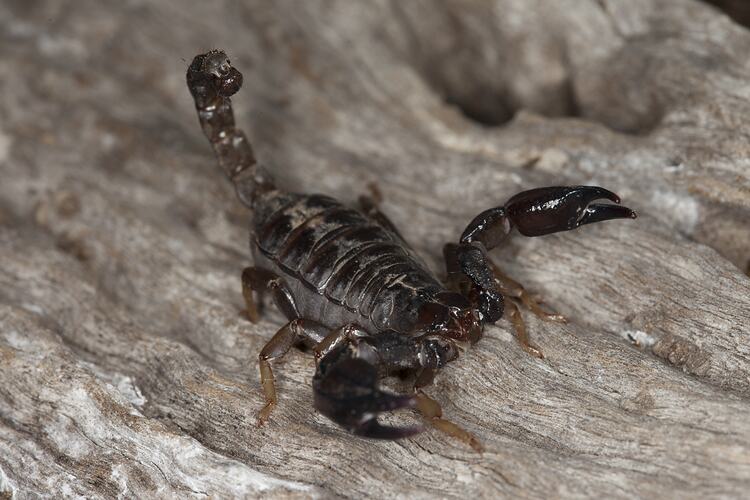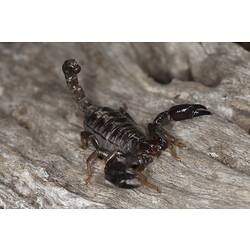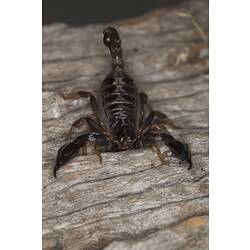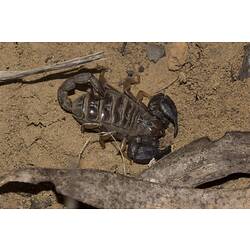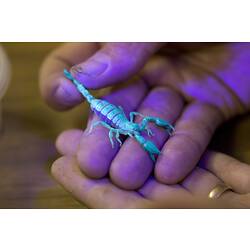General Description
Body wide, dark brown to black. Tail shorter than body length. Body up to 6 cm long.
Biology
Black Rock Scorpions live in cleared areas beneath rocks or logs in burrows. They are "sit and wait" predators. They ambush other invertebrates, waiting at their burrow to feel vibrations in the ground that signal an approaching prey item. The Black Rock Scorpion survives on a diet of other invertebrates, such as cockroaches, beetles, millipedes, centipedes, spiders and occasionally earthworms. Cannibalism has been observed amongst scorpions. Females may take two to three years to reach maturity and survive for a further eight years making it a relatively long-lived species. The female will carry the young internally and birth live young. She then carries her young on her back for up to several weeks before they become independent. Under UV light they glow a blue-green unless they have newly moulted. It is one of three species of scorpions that can be found in the greater Melbourne region.
Distribution
Eastern mainland Australia.
Habitat
Under rocks and logs.
More Information
-
Animal Type
-
Animal SubType
-
Brief Id
Dark brown scorpion with a tail shorter that is shorter than the body length.
-
Colours
Brown, Black
-
Maximum Size
6 cm
-
Diet
Carnivore
-
Diet Categories
Invertebrates
-
Hazards
Sting is painful and can cause inflammation and pain for several hours, and medical advice should be sought though it is not usually dangerous.
-
Endemicity
-
Conservation Statuses
CITES: Not listed, FFG Threatened List: Not listed, EPBC Act 1999: Not listed, IUCN Red List: Not listed
-
Taxon Name
-
Scientific Author
(Thorell, 1876)
-
Common Name
Black Rock Scorpion
-
Kingdom
-
Phylum
-
Subphylum
-
Class
-
Order
-
Family
-
Genus
-
Species Name
manicatus
